How Climate Change Drives Biodiversity Loss
Climate change is not just a buzzword; it’s a reality that’s reshaping our planet in profound ways. The intricate relationship between climate change and biodiversity is akin to a delicate web, where every strand is interconnected. When one strand is pulled, the entire web can unravel. This article explores the various factors contributing to species decline and ecosystem disruption, while emphasizing the urgent need for conservation efforts. As temperatures rise and weather patterns shift, the consequences for our planet's biodiversity are dire. If we don’t act now, we could witness a dramatic loss of species that play crucial roles in our ecosystems.
Biodiversity encompasses the variety of life on Earth, including species diversity, genetic diversity, and ecosystem diversity. Imagine biodiversity as a grand tapestry, woven from countless threads of life. Each thread represents a different species, each with its own unique role and function. This diversity is crucial for maintaining ecological balance and supporting human well-being. Healthy ecosystems provide essential services, such as clean air and water, pollination of crops, and climate regulation. When biodiversity is threatened, these services are compromised, leading to a ripple effect that can impact food security, health, and even economic stability.
Climate change is driven by various factors, and understanding these is vital to grasping its impact on biodiversity. Among the most significant contributors are greenhouse gas emissions and deforestation, both of which have far-reaching effects on the planet's climate systems. These factors not only alter weather patterns but also disrupt habitats, making it increasingly difficult for many species to survive. The urgency to address these issues cannot be overstated; the clock is ticking, and the consequences of inaction are mounting.
The release of greenhouse gases is a primary driver of climate change. These gases, such as carbon dioxide and methane, trap heat in the atmosphere, leading to rising global temperatures. Think of it like a thick blanket wrapped around the Earth—while it keeps us warm, it can also cause overheating. As temperatures rise, weather patterns become more erratic, resulting in extreme weather events like hurricanes, droughts, and floods. These changes can devastate habitats, making it difficult for species to adapt and survive.
Identifying the major sources of greenhouse gas emissions is crucial for understanding climate change. Here are some of the significant contributors:
- Industrial Activities: Factories and power plants release large amounts of carbon dioxide and other pollutants.
- Transportation: Cars, trucks, and airplanes contribute significantly to emissions through fossil fuel combustion.
- Agriculture: Livestock production and the use of fertilizers release methane and nitrous oxide, potent greenhouse gases.
Each of these sources plays a role in the larger picture of climate change, and addressing them is key to mitigating its impacts on biodiversity.
The impact of greenhouse gas emissions on ecosystems is profound. As the climate shifts, many species find their habitats altered or destroyed. For instance, coral reefs, which are home to a vast array of marine life, are suffering from bleaching due to rising sea temperatures. Similarly, polar bears are losing their sea ice habitats, making it increasingly difficult for them to hunt and survive. These disruptions threaten not only individual species but also the intricate relationships that sustain ecosystems. The loss of one species can have a cascading effect, leading to further declines in biodiversity.
Deforestation is a significant consequence of climate change, leading to habitat loss for countless species. Forests are often cleared for agriculture, urban development, and logging, which not only releases stored carbon but also destroys the homes of many species. This loss of habitat is like tearing pages out of a book—each page contains a story, and without it, the narrative of biodiversity is incomplete. As habitats shrink, species are forced into smaller areas, leading to increased competition for resources and a higher risk of extinction.
Climate change poses various threats to species, including altered habitats and changing migration patterns. For example, migratory birds are finding their traditional routes disrupted, leading to mismatched timing between their arrival and the availability of food sources. Similarly, many amphibians are facing extinction as their sensitive ecosystems are altered by temperature changes and habitat loss. The impact of climate change on species is not just a future concern; it’s happening now, and the consequences are alarming.
Many species are at risk of extinction due to climate change. Vulnerable species, such as the snow leopard and the orangutan, are facing existential threats from habitat loss and changing climates. The factors contributing to their decline include:
- Loss of Habitat: As climates change, suitable habitats are disappearing.
- Food Scarcity: Altered ecosystems can lead to a lack of food resources.
- Increased Competition: Species may face new competitors in their altered habitats.
Each of these factors compounds the risk of extinction, making it critical to address climate change swiftly.
While some species can adapt to changing climates, others cannot. Adaptation might involve shifting their range to cooler areas or altering their breeding cycles. Resilience, on the other hand, is the ability of an ecosystem to recover from disturbances. Maintaining biodiversity is essential for fostering resilience; diverse ecosystems are often more robust and can better withstand environmental changes. However, the window for adaptation is closing, and without immediate action, many species will be left without a lifeline.
Addressing biodiversity loss requires effective conservation strategies. Habitat restoration, creating protected areas, and implementing sustainable practices are essential steps to mitigate the impacts of climate change. Conservation is not just about saving individual species; it’s about preserving the intricate web of life that sustains us all. By prioritizing these efforts, we can work towards a future where biodiversity thrives alongside human development.
Restoration efforts play a crucial role in recovering ecosystems. Successful case studies of habitat restoration, such as reforestation projects and wetland rehabilitation, have shown positive impacts on biodiversity. These initiatives not only help restore habitats but also enhance carbon sequestration, contributing to climate change mitigation. By investing in restoration, we can mend the fabric of our ecosystems and provide a brighter future for all species.
Effective policies and advocacy are essential for biodiversity conservation. Legislation aimed at reducing emissions, protecting habitats, and promoting sustainable practices can drive significant change. Community efforts, such as local conservation groups and educational programs, also play a vital role in raising awareness and fostering a culture of sustainability. Together, we can advocate for policies that prioritize the health of our planet and its diverse inhabitants.
Q: What is biodiversity, and why is it important?
A: Biodiversity refers to the variety of life on Earth, including species, genetic, and ecosystem diversity. It is crucial for ecological balance and provides essential services to humans, such as clean air, water, and food.
Q: How does climate change affect biodiversity?
A: Climate change alters habitats, disrupts ecosystems, and threatens species survival. Rising temperatures and changing weather patterns can lead to habitat loss, food scarcity, and increased competition among species.
Q: What can be done to mitigate biodiversity loss?
A: Effective conservation strategies, such as habitat restoration, creating protected areas, and promoting sustainable practices, are essential for mitigating biodiversity loss and addressing climate change.
Q: Are there species that can adapt to climate change?
A: Some species have shown the ability to adapt to changing climates, but many are at risk of extinction due to their inability to cope with rapid environmental changes.

Understanding Biodiversity
Biodiversity is a term that encapsulates the rich tapestry of life on our planet. It refers to the variety of living organisms, including their different species, genetic variations, and the ecosystems they form. Imagine a vibrant garden filled with various flowers, each contributing its unique colors and fragrances; that's biodiversity in action! It's not just about the number of species, but also about the intricate relationships between them and their environments. This diversity is crucial for maintaining ecological balance and ensuring the health of our planet.
Why is biodiversity so important? Well, it plays a vital role in ecosystem services, which are the benefits that humans derive from nature. These services include:
- Provisioning Services: Such as food, water, and raw materials.
- Regulating Services: Including climate regulation, disease control, and water purification.
- Supporting Services: Like nutrient cycling and soil formation.
- Cultural Services: Encompassing recreational, aesthetic, and spiritual benefits.
Each species, no matter how small, plays a role in these services. For instance, bees are essential for pollinating many crops, while wetlands act as natural water filters. Without biodiversity, these systems falter, leading to dire consequences for both the environment and human health.
Moreover, biodiversity is a key indicator of the health of ecosystems. A diverse ecosystem is more resilient to changes, such as climate fluctuations or human impacts. Think of it like a well-balanced diet; just as our bodies need a variety of nutrients to function properly, ecosystems require a mix of species to thrive. When we lose biodiversity, we risk destabilizing these systems, making them more vulnerable to diseases, pests, and environmental changes.
In summary, understanding biodiversity is not just an academic exercise; it's an urgent call to action. The intricate connections between species and their habitats underscore the importance of conservation efforts. As we delve deeper into the impacts of climate change on biodiversity, we must remember that every species lost is a thread pulled from the fabric of life, weakening the entire system. The time to act is now, as the survival of countless species—and ultimately, our own—depends on the health of our planet's biodiversity.
Q: What is biodiversity?
A: Biodiversity refers to the variety of life on Earth, including the diversity of species, genetic variations, and ecosystems.
Q: Why is biodiversity important?
A: Biodiversity is crucial for ecosystem services that support human life, such as food production, clean water, and climate regulation.
Q: How does climate change affect biodiversity?
A: Climate change alters habitats, disrupts migration patterns, and increases extinction risks for many species, leading to a decline in biodiversity.
Q: What can be done to protect biodiversity?
A: Conservation strategies such as habitat restoration, creating protected areas, and promoting sustainable practices are essential for protecting biodiversity.

Key Factors of Climate Change
Climate change is not just a buzzword; it’s a reality that affects every living organism on our planet. The primary drivers of this phenomenon are multifaceted, with **greenhouse gas emissions** and **deforestation** standing out as the most significant contributors. Understanding these factors is crucial for grasping how they intertwine to create a cascade of environmental challenges that threaten biodiversity.
To put it simply, greenhouse gases trap heat in the atmosphere, creating a **greenhouse effect** that leads to rising global temperatures. Imagine wrapping yourself in a thick blanket on a hot summer day; that’s what these gases do to our planet. The more we emit, the warmer it gets, disrupting weather patterns and ecosystems alike. The main culprits behind these emissions include:
- Industrial Activities: Factories and power plants release vast amounts of carbon dioxide (CO2) and other gases into the atmosphere.
- Transportation: Cars, trucks, and airplanes contribute significantly to greenhouse gas emissions through the burning of fossil fuels.
- Agriculture: Livestock farming produces methane, a potent greenhouse gas, while the use of fertilizers releases nitrous oxide.
As these gases accumulate, they not only elevate temperatures but also lead to extreme weather events such as hurricanes, droughts, and floods. These changes can disrupt natural habitats, making it increasingly difficult for various species to survive. For instance, coral reefs, which are home to a staggering diversity of marine life, are suffering from bleaching events caused by rising sea temperatures. Such impacts highlight the **urgent need for action** to mitigate greenhouse gas emissions.
Another key factor is **deforestation**, which is often driven by the need for agricultural land, logging, and urban expansion. The loss of forests not only releases stored carbon dioxide back into the atmosphere but also destroys the habitats of countless species. When trees are cut down, it’s like taking away the roof of a house; the inhabitants are left exposed and vulnerable. This habitat loss has dire consequences for biodiversity, leading to a decline in species populations and even extinction.
In summary, the interplay between greenhouse gas emissions and deforestation creates a perfect storm for climate change, threatening the delicate balance of our ecosystems. As we continue to grapple with these challenges, it's essential to recognize that **the choices we make today will shape the world of tomorrow**. Whether it’s reducing our carbon footprint, supporting reforestation efforts, or advocating for sustainable practices, every action counts in the fight against climate change.
Q: What are greenhouse gases?
A: Greenhouse gases are gases in the Earth's atmosphere that trap heat. The most common ones include carbon dioxide (CO2), methane (CH4), and nitrous oxide (N2O).
Q: How does deforestation contribute to climate change?
A: Deforestation contributes to climate change by releasing stored carbon dioxide when trees are cut down and burned. It also reduces the number of trees available to absorb CO2 from the atmosphere.
Q: What can individuals do to help combat climate change?
A: Individuals can reduce their carbon footprint by using public transportation, conserving energy at home, supporting renewable energy sources, and participating in tree planting initiatives.
Q: Why is biodiversity important?
A: Biodiversity is crucial for maintaining ecological balance, providing food, medicine, and clean air and water. It also helps ecosystems recover from environmental stresses.

Greenhouse Gas Emissions
Greenhouse gas emissions are a significant driving force behind climate change, fundamentally altering our planet's climate systems. When we think about our atmosphere, it's like a cozy blanket that keeps us warm, but when we add too many layers—thanks to emissions from various human activities—things start to heat up. The primary culprits of these emissions include carbon dioxide (CO2), methane (CH4), and nitrous oxide (N2O). Each of these gases has a unique role in trapping heat in the atmosphere, leading to rising global temperatures.
To put it into perspective, consider this: the more greenhouse gases we emit, the more we disrupt the delicate balance of our ecosystems. For instance, carbon dioxide, which is released through burning fossil fuels for energy, accounts for about 76% of total greenhouse gas emissions in the United States alone. This staggering figure highlights how our reliance on coal, oil, and natural gas is contributing to the warming of our planet. Methane, on the other hand, is released during the production and transport of coal, oil, and natural gas, as well as from livestock and other agricultural practices. Although methane is present in smaller quantities, it is over 25 times more effective than CO2 at trapping heat over a 100-year period. This means that even small increases in methane emissions can have a profound impact on global temperatures.
As we delve deeper into the sources of these emissions, it becomes clear that our everyday activities play a significant role. Key sources include:
- Industrial Activities: Factories and power plants are major contributors, releasing vast amounts of CO2 and other greenhouse gases into the atmosphere.
- Transportation: Cars, trucks, and airplanes burn fossil fuels, contributing significantly to greenhouse gas emissions.
- Agriculture: Livestock production and the use of synthetic fertilizers lead to substantial methane and nitrous oxide emissions.
The impact of these emissions is not just a future concern; it’s happening right now. The changing climate leads to extreme weather events, rising sea levels, and shifts in wildlife populations. For example, as temperatures rise, many species are forced to migrate to cooler areas, disrupting their natural habitats and leading to conflicts with other species. This domino effect can result in a cascade of biodiversity loss, as some species may not be able to adapt quickly enough to survive in their new environments.
In summary, greenhouse gas emissions are a critical factor driving climate change and, consequently, biodiversity loss. Understanding the sources and effects of these emissions is essential for developing effective strategies to combat climate change and protect our planet’s precious ecosystems.
- What are greenhouse gases? Greenhouse gases are gases in the Earth's atmosphere that trap heat. The most common ones include carbon dioxide, methane, and nitrous oxide.
- How do greenhouse gas emissions affect climate change? These emissions increase the greenhouse effect, leading to higher global temperatures and changing weather patterns, which can disrupt ecosystems.
- What can individuals do to reduce greenhouse gas emissions? Individuals can reduce emissions by using public transport, conserving energy, eating less meat, and supporting renewable energy initiatives.
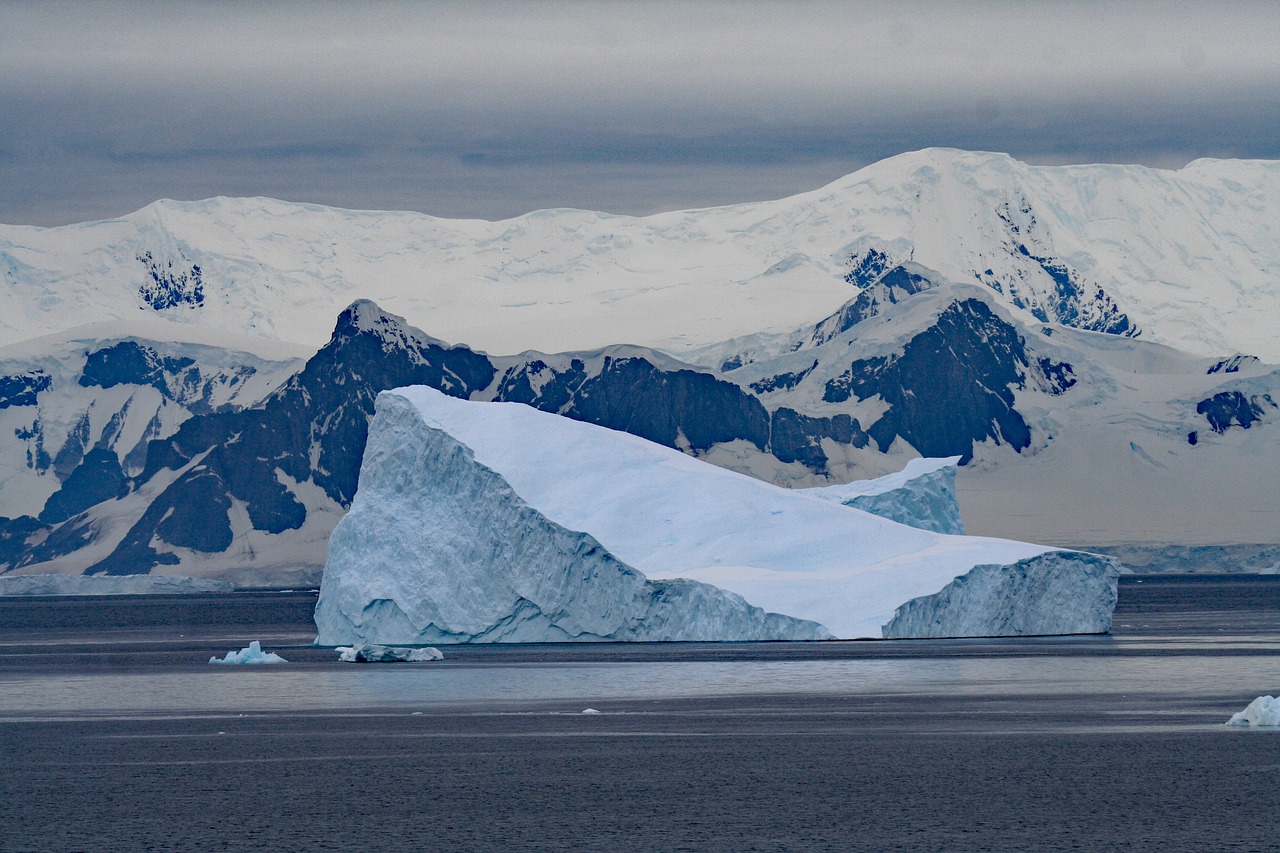
Sources of Emissions
Understanding the sources of greenhouse gas emissions is crucial in tackling climate change and its detrimental effects on biodiversity. These emissions stem from a variety of human activities that release significant quantities of carbon dioxide (CO2), methane (CH4), and nitrous oxide (N2O) into the atmosphere. Let's dive deeper into some of the primary culprits behind these emissions.
One of the largest contributors to greenhouse gas emissions is industrial activity. Factories and power plants that burn fossil fuels for energy are notorious for emitting vast amounts of CO2. The manufacturing processes, especially in industries like cement and steel production, also release other harmful gases. In fact, according to the Intergovernmental Panel on Climate Change (IPCC), industrial processes account for approximately 21% of global greenhouse gas emissions.
Transportation is another significant source of emissions. Vehicles, airplanes, and ships that run on gasoline or diesel contribute heavily to air pollution and greenhouse gas emissions. In urban areas, traffic congestion exacerbates the problem, leading to increased fuel consumption and emissions. The transportation sector is responsible for around 14% of total emissions globally, making it a critical area for improvement.
A major player in the emissions game is agriculture. Farming practices, especially those involving livestock, release substantial amounts of methane through enteric fermentation (the digestive process in ruminants) and nitrous oxide from fertilized soils. In fact, agriculture accounts for nearly 24% of global greenhouse gas emissions, highlighting the need for sustainable farming practices.
To illustrate these sources more clearly, here’s a table summarizing the key contributors to greenhouse gas emissions:
| Source | Percentage of Global Emissions |
|---|---|
| Industrial Activity | 21% |
| Transportation | 14% |
| Agriculture | 24% |
| Energy Production | 42% |
These figures paint a stark picture of how human activities contribute to climate change. Each source of emissions not only impacts the atmosphere but also disrupts ecosystems, leading to a cascading effect on biodiversity. For instance, as temperatures rise due to increased greenhouse gases, habitats shift, and species struggle to adapt, ultimately threatening their survival. This intricate web of interactions underscores the urgency of addressing these emissions at their source.
In summary, the sources of greenhouse gas emissions are varied and complex, encompassing industrial activities, transportation, agriculture, and energy production. Each plays a pivotal role in shaping our planet's climate and, consequently, its biodiversity. By recognizing and addressing these sources, we can take significant steps toward a more sustainable future.
- What are greenhouse gases? Greenhouse gases are gases that trap heat in the atmosphere, contributing to the greenhouse effect and climate change. Common examples include carbon dioxide, methane, and nitrous oxide.
- How does transportation contribute to climate change? Transportation contributes to climate change primarily through the burning of fossil fuels, which releases greenhouse gases into the atmosphere.
- What can individuals do to reduce emissions? Individuals can reduce emissions by using public transport, cycling, conserving energy at home, and supporting sustainable practices.

Impact on Ecosystems
The impact of greenhouse gas emissions on ecosystems is nothing short of catastrophic. As the climate warms, it creates a domino effect that disrupts the delicate balance of life on Earth. Imagine a finely tuned orchestra, where each instrument represents a different species or ecosystem component. When one instrument goes out of tune, the entire symphony can falter. This is precisely what happens when greenhouse gases alter climate patterns.
Rising temperatures lead to shifts in habitats, forcing species to migrate to cooler areas. However, not all species can simply pack their bags and move. For instance, many plants and animals are adapted to specific climatic conditions and cannot survive in new environments. As a result, we see a significant decline in populations, which can lead to local extinctions. According to recent studies, nearly one million species are currently at risk due to climate change, a staggering figure that highlights the urgency of the situation.
Moreover, changing weather patterns can disrupt the timing of natural events, such as breeding seasons or food availability. For example, if insects emerge earlier due to warmer temperatures, birds that rely on them for food may find themselves in a precarious situation. This mismatch can lead to decreased reproductive success and ultimately threaten the survival of those bird species.
Additionally, ecosystems are interconnected. The loss of one species can have a ripple effect throughout the entire ecosystem. Consider the role of pollinators, like bees. Their decline due to climate change not only affects the plants they pollinate but also the animals that depend on those plants for food. This interconnectedness means that the impacts of climate change are not isolated; they reverberate through entire food webs.
Another critical aspect is the impact on marine ecosystems. Ocean temperatures are rising, and acidification is becoming a pressing issue due to increased carbon dioxide absorption. Coral reefs, often referred to as the "rainforests of the sea," are particularly vulnerable. These vibrant ecosystems provide habitat for countless marine species, but as temperatures rise and waters become more acidic, coral bleaching occurs. This not only affects the corals themselves but also the myriad of species that rely on them for shelter and food.
In light of these challenges, it is crucial to recognize the importance of protecting our ecosystems. Conservation efforts must focus on enhancing resilience, allowing ecosystems to adapt to changing conditions. By preserving biodiversity and restoring habitats, we can help mitigate the impacts of climate change and ensure the survival of countless species.
- What is biodiversity? Biodiversity refers to the variety of life on Earth, including the diversity of species, genetic variations, and ecosystems.
- How does climate change affect biodiversity? Climate change alters habitats, disrupts food chains, and threatens species survival, leading to biodiversity loss.
- What can be done to protect ecosystems? Conservation strategies, habitat restoration, and sustainable practices are essential for protecting ecosystems from climate change.
- Why is it important to maintain biodiversity? Biodiversity is crucial for ecosystem health, resilience, and providing essential services to humanity, such as clean air and water.
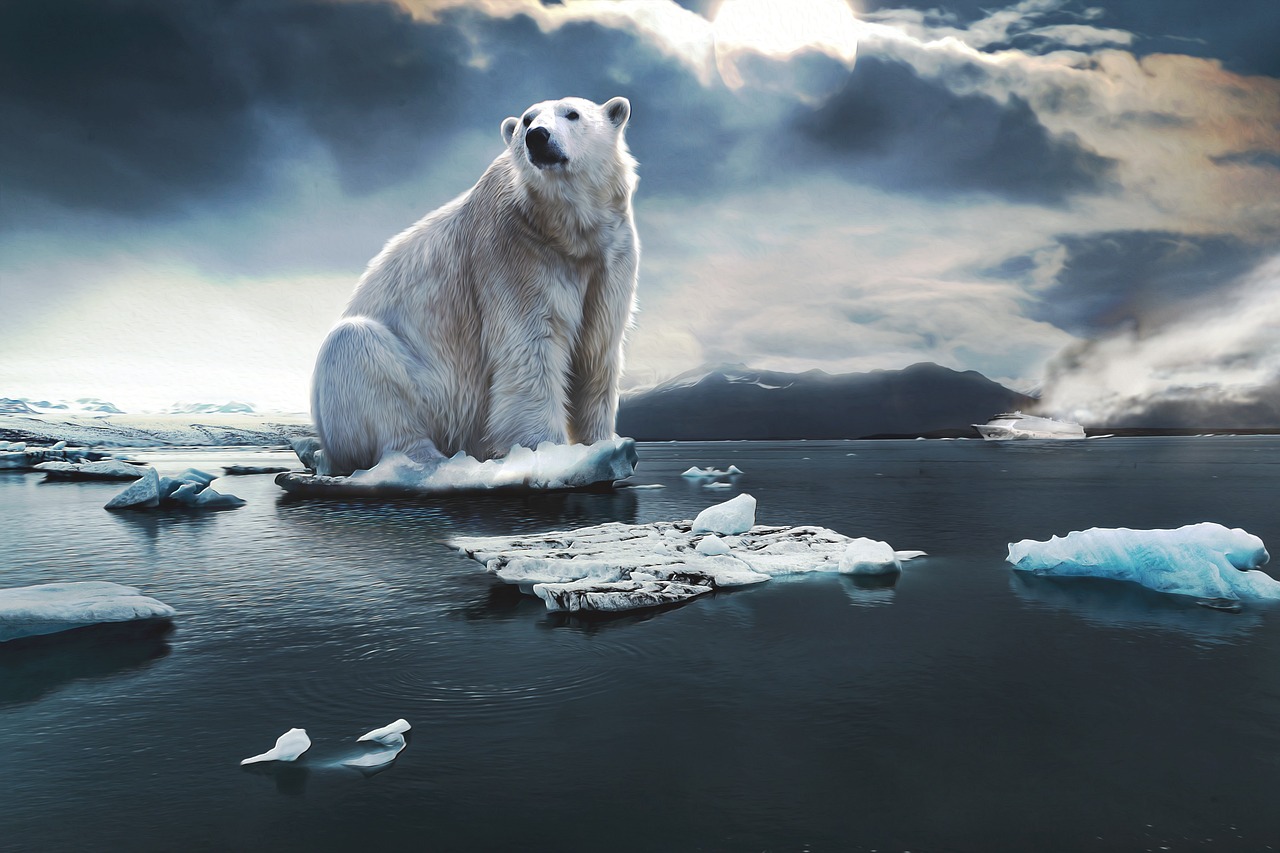
Deforestation and Habitat Loss
Deforestation is not just a buzzword; it’s a reality that is reshaping our planet and the lives of countless species. Imagine a thriving forest, bustling with life, being reduced to barren land, devoid of its rich biodiversity. This is what happens when trees are cut down at alarming rates, often to make way for agriculture, urban development, or logging. The connection between deforestation and habitat loss is as clear as day. When trees are removed, the intricate web of life that depends on these ecosystems begins to unravel. Birds lose their nesting sites, mammals lose their homes, and countless insects lose their habitats. It’s a domino effect that can lead to the extinction of species that cannot adapt quickly enough to these rapid changes.
Moreover, the loss of forests contributes significantly to climate change, creating a vicious cycle that exacerbates biodiversity loss. Forests act as carbon sinks, absorbing carbon dioxide from the atmosphere. When they are cut down, not only is this carbon storage capacity diminished, but the carbon that was stored is released back into the atmosphere, further driving climate change. This, in turn, leads to altered weather patterns, which can make habitats unsuitable for many species that have thrived there for generations.
To truly understand the impact of deforestation on biodiversity, we must consider the scale of this issue. According to the Food and Agriculture Organization (FAO), approximately 10 million hectares of forest are lost each year. That’s equivalent to losing an area roughly the size of Portugal annually! This staggering statistic highlights the urgency of addressing deforestation. The most affected regions include tropical rainforests, which are home to over half of the world’s terrestrial species. The Amazon rainforest, often referred to as the "lungs of the Earth," is experiencing significant deforestation, threatening not just the local wildlife, but also global climate regulation.
In light of these facts, it’s essential to recognize that habitat loss doesn’t just affect wildlife; it also impacts human communities. Many indigenous peoples rely on forests for their livelihoods, culture, and identity. The destruction of these habitats can lead to social and economic challenges, creating a ripple effect that extends far beyond the trees themselves.
As we delve deeper into the issue, we must ask ourselves: What can we do to combat deforestation and its devastating impacts? It starts with awareness and education. By understanding the importance of forests and the biodiversity they support, we can advocate for sustainable practices that protect these vital ecosystems. Additionally, supporting organizations that focus on reforestation and conservation can make a significant difference. Together, we can work towards a future where biodiversity thrives, and forests remain standing, sheltering the rich tapestry of life they support.
- What are the main causes of deforestation? Deforestation is primarily caused by agricultural expansion, logging, infrastructure development, and mining activities.
- How does deforestation affect climate change? Deforestation contributes to climate change by releasing stored carbon dioxide into the atmosphere and reducing the number of trees available to absorb carbon.
- What can individuals do to help reduce deforestation? Individuals can reduce deforestation by supporting sustainable products, advocating for conservation policies, and participating in reforestation efforts.
- Why is biodiversity important? Biodiversity is crucial for ecosystem stability, providing essential services such as pollination, water purification, and climate regulation, which are vital for human survival.
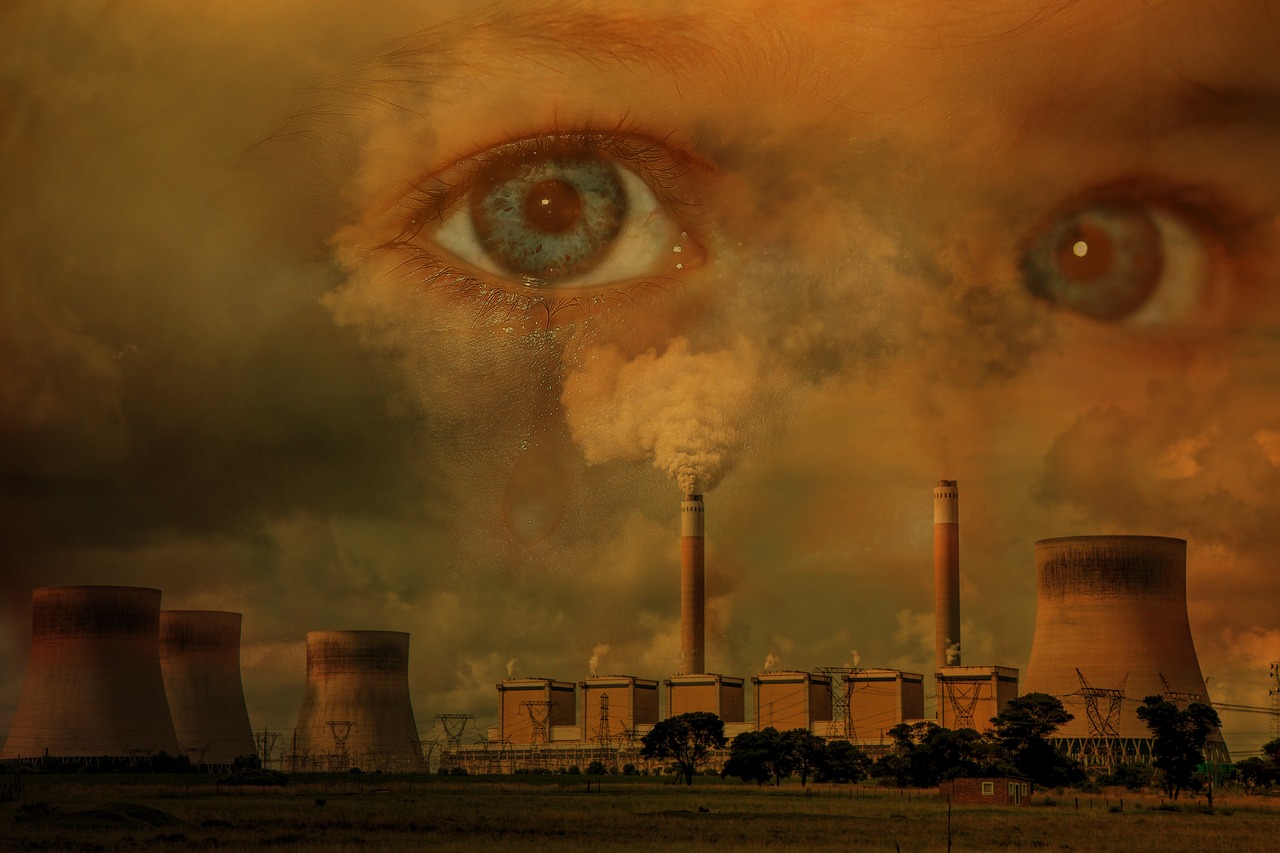
Effects of Climate Change on Species
Climate change is not just a distant threat; it’s a reality that is reshaping our planet and having profound impacts on species across the globe. As temperatures rise, habitats are altered, and the delicate balance of ecosystems is disrupted. This creates a ripple effect that can lead to significant changes in species behavior, distribution, and survival. For instance, some species may find their traditional habitats becoming inhospitable due to rising temperatures or changing precipitation patterns. Imagine a polar bear trying to hunt on melting ice; it’s a stark reminder of how climate change can directly threaten survival.
One of the most alarming effects of climate change is the alteration of migration patterns. Many species, particularly birds and fish, rely on specific environmental cues to migrate at the right time. With climate change, these cues are shifting, leading to mismatches in timing that can affect breeding, feeding, and ultimately survival. For example, if a bird migrates too early and arrives before its food source is available, it may struggle to find enough to eat, jeopardizing its chances of survival.
Moreover, the impact of climate change is not uniform across species. Some are more vulnerable than others, particularly those with limited ranges or specialized habitat requirements. For instance, amphibians are particularly sensitive to changes in temperature and moisture levels. As their habitats are altered, they face increased risks of extinction. In fact, studies have shown that climate change could increase the risk of extinction for up to 40% of amphibian species by the end of the century.
To illustrate this further, consider the following table that highlights some species at risk due to climate change:
| Species | Habitat | Threat Level |
|---|---|---|
| Polar Bear | Arctic Ice | High |
| Coral Reefs | Marine | Critical |
| Amphibians | Wetlands | High |
| Monarch Butterfly | Grasslands | Moderate |
In addition to these direct impacts, climate change can also exacerbate existing threats such as habitat destruction, pollution, and invasive species. For example, as temperatures rise, invasive species may thrive in new areas, outcompeting native species for resources. This can lead to a further decline in biodiversity, as native species struggle to adapt to the changing conditions.
Ultimately, the effects of climate change on species are complex and multifaceted. They highlight the urgent need for conservation efforts that are informed by the latest scientific research. Protecting biodiversity is not just about saving individual species; it’s about maintaining the health of entire ecosystems, which in turn supports human well-being. Without concerted action, we risk losing not only the beauty of our natural world but also the essential services that these ecosystems provide.
- What are the main effects of climate change on species? Climate change affects species through habitat alteration, changing migration patterns, and increased extinction risks, especially for vulnerable species.
- How does climate change impact migration patterns? Changes in temperature and environmental cues can lead to mismatches in migration timing, affecting breeding and survival.
- Which species are most at risk from climate change? Species with limited ranges, specialized habitat requirements, and those already facing threats are typically the most vulnerable.
- What can be done to protect species from climate change? Effective conservation strategies, habitat protection, and sustainable practices are essential to mitigate the impacts of climate change on biodiversity.
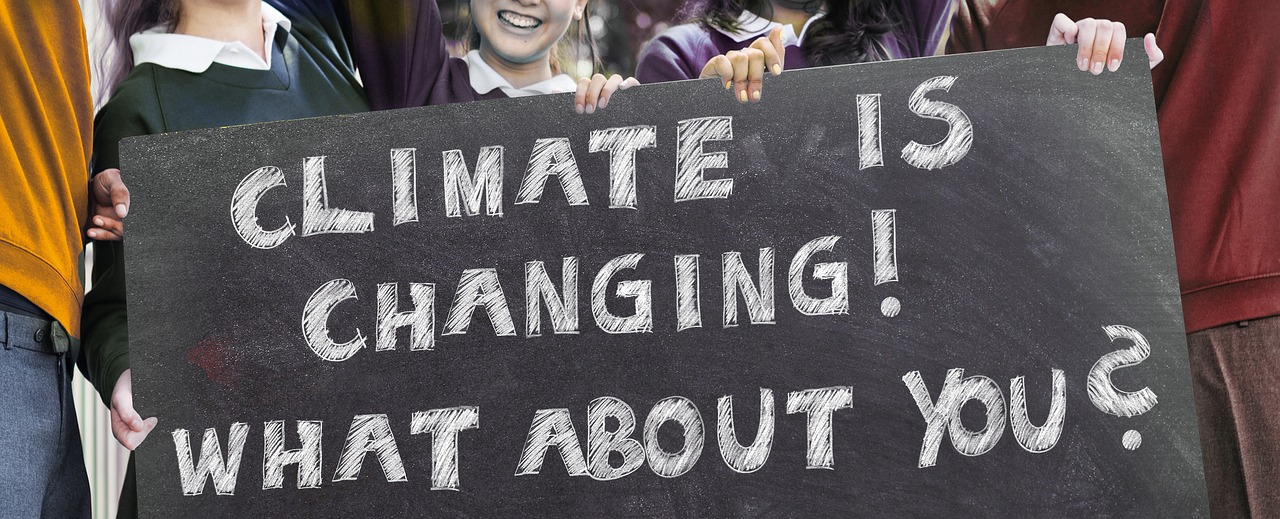
Species Extinction Risks
This article explores the intricate relationship between climate change and biodiversity, highlighting various factors contributing to species decline and ecosystem disruption while emphasizing the urgent need for conservation efforts.
Biodiversity encompasses the variety of life on Earth, including species diversity, genetic diversity, and ecosystem diversity. This section will define biodiversity and discuss its importance to ecological balance and human well-being.
Climate change is driven by various factors, including greenhouse gas emissions and deforestation. This section will explore these key contributors and their direct effects on the planet's climate systems.
The release of greenhouse gases is a primary driver of climate change. This subheading will delve into how these emissions affect global temperatures and weather patterns, leading to biodiversity loss.
Identifying the major sources of greenhouse gas emissions is crucial for understanding climate change. This part will discuss industrial activities, transportation, and agriculture as significant contributors.
The impact of greenhouse gas emissions on ecosystems is profound. This section will examine how changing climates disrupt habitats and threaten species survival.
Deforestation is a significant consequence of climate change, leading to habitat loss for countless species. This subheading will explore the connection between deforestation and biodiversity decline.
Climate change poses various threats to species, including altered habitats and changing migration patterns. This section will discuss specific examples of how climate change impacts different species around the world.
As climate change accelerates, the risk of species extinction escalates dramatically. Many species, especially those with limited ranges or specialized habitats, are facing unprecedented threats. For instance, polar bears are struggling as their sea ice habitat diminishes due to rising temperatures. Similarly, amphibians are particularly vulnerable, with many species already declining due to habitat loss and disease exacerbated by climate change.
In fact, scientists estimate that climate change could push more than 1 million species toward extinction in the coming decades. This alarming statistic underscores the urgent need for action. The factors contributing to extinction risks include:
- Habitat Alteration: Changes in temperature and precipitation patterns disrupt natural habitats, making it difficult for many species to survive.
- Invasive Species: Warmer climates may allow invasive species to thrive, outcompeting native species for resources.
- Food Chain Disruption: As species migrate or decline, the entire food web can be affected, leading to further declines in biodiversity.
Moreover, species that are already endangered face compounded challenges. For example, the Amur leopard, one of the rarest big cats, is not only threatened by poaching but also by habitat loss due to climate change. The combination of these pressures makes it increasingly difficult for such species to recover.
It's crucial to understand that extinction is not just a loss of individual species; it disrupts entire ecosystems. Each species plays a unique role, and their loss can lead to a cascade of effects that compromise the health of our planet. Therefore, addressing these risks is not just about saving species—it's about preserving the intricate web of life that sustains us all.
Addressing biodiversity loss requires effective conservation strategies. This section will outline various approaches, including habitat restoration, protected areas, and sustainable practices to mitigate the impacts of climate change.
Restoration efforts play a crucial role in recovering ecosystems. This subheading will discuss successful case studies of habitat restoration and their positive impacts on biodiversity.
Effective policies and advocacy are essential for biodiversity conservation. This part will explore how legislation and community efforts can drive change and support sustainable practices.
Biodiversity refers to the variety of life on Earth, including the diversity of species, genetic variations, and ecosystems. It is essential for ecological balance and human well-being.
Climate change affects biodiversity by altering habitats, changing migration patterns, and increasing the risks of extinction for many species. It disrupts ecosystems and can lead to significant declines in various populations.
Protecting endangered species requires concerted efforts, including habitat restoration, establishing protected areas, and implementing effective policies and advocacy to combat climate change.
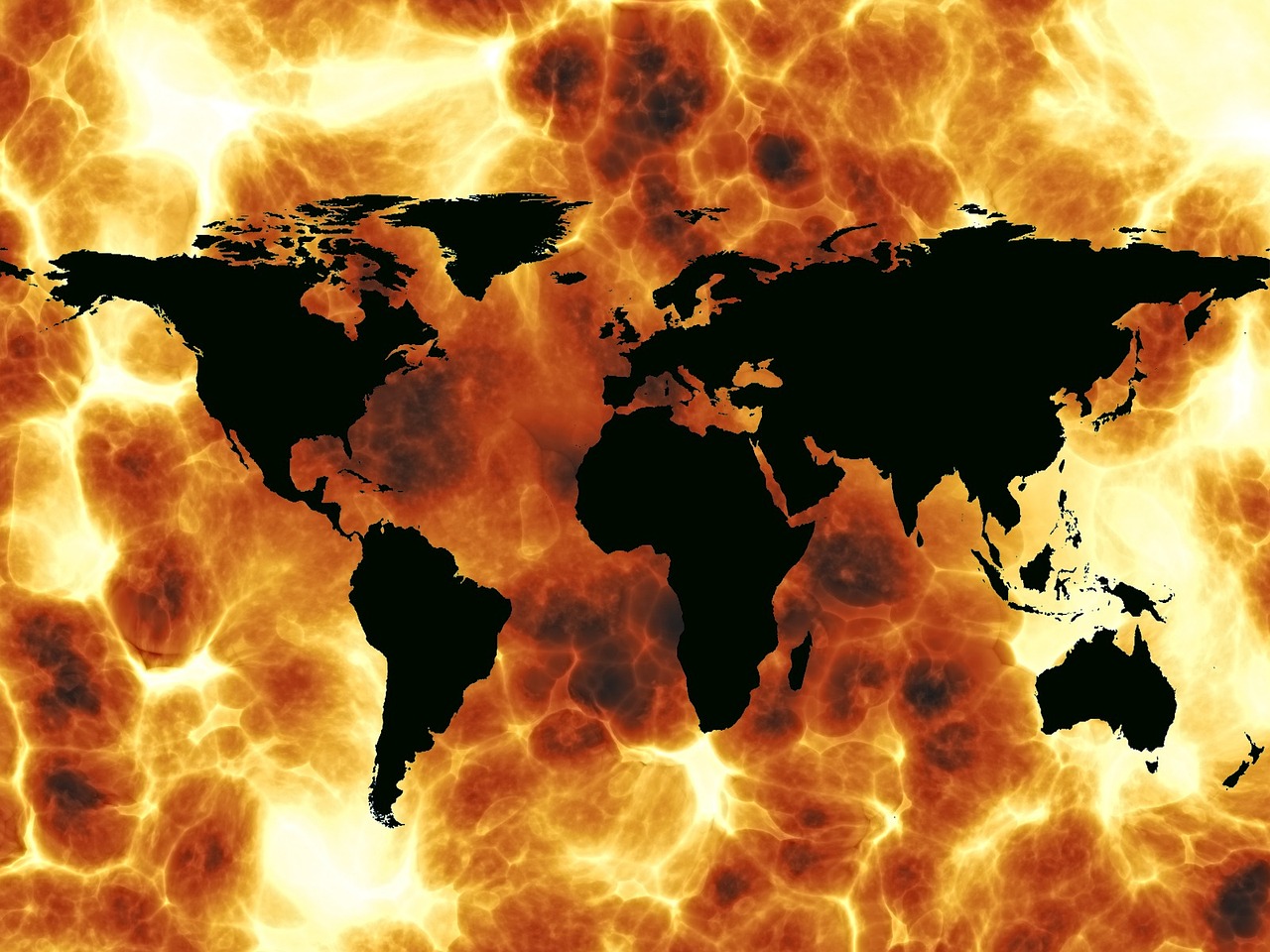
Adaptation and Resilience
When we talk about adaptation and resilience in the context of climate change, we’re diving into a fascinating world of survival and evolution. Imagine a tightrope walker, skillfully balancing on a thin line—this is akin to how species navigate the challenges posed by our changing climate. Some organisms have the remarkable ability to adjust to shifting conditions, while others struggle to keep their footing. The ability to adapt is vital for survival, and it can take many forms, from physiological changes to behavioral shifts.
For instance, consider the polar bear, a creature that has adapted to life in the Arctic. As the ice melts due to warming temperatures, these magnificent animals are forced to travel greater distances to find food. Some bears have learned to hunt seals in open water instead of relying solely on ice platforms. This adaptation showcases nature's resilience, but it also highlights a critical point: not all species can adapt quickly enough to survive the rapid pace of climate change.
Adaptation strategies can be classified into several categories:
- Physiological Adaptations: Changes in body functions, such as altering metabolic rates or developing thicker fur.
- Behavioral Adaptations: Shifts in feeding habits or migration patterns, often in response to environmental changes.
- Reproductive Adaptations: Changes in breeding cycles or offspring size to enhance survival chances.
However, adaptation is not a one-size-fits-all solution. Some species, particularly those with limited mobility or specialized habitats, face significant challenges. For example, the mountain pine beetle has expanded its range northward due to milder winters, wreaking havoc on forests. Meanwhile, species like the Amur leopard, with a dwindling population and a specific habitat requirement, struggle to adapt as their environment changes. The stark reality is that while some species may thrive, others are left vulnerable and at risk of extinction.
Resilience, on the other hand, refers to the ability of an ecosystem to recover from disturbances. Think of it as a rubber band that can stretch but returns to its original shape after being pulled. Healthy ecosystems often exhibit resilience, allowing them to bounce back from events like wildfires or floods. For example, coral reefs, despite being severely affected by rising ocean temperatures, have shown some capacity for recovery when given the chance. However, the increasing frequency and intensity of stressors, such as coral bleaching, challenge this resilience.
In conclusion, adaptation and resilience are essential components of the survival puzzle amidst climate change. While some species and ecosystems demonstrate remarkable flexibility, the clock is ticking. The rapid pace of climate change poses a significant threat to biodiversity, and we must act swiftly to protect those who cannot adapt. Conservation efforts that focus on enhancing resilience—like restoring habitats and protecting genetic diversity—are crucial in ensuring that both species and ecosystems can thrive in an uncertain future.
- What is the difference between adaptation and resilience?
Adaptation refers to the changes that species make to survive in a changing environment, while resilience is the ability of an ecosystem to recover from disturbances. - Can all species adapt to climate change?
No, not all species have the capacity to adapt quickly enough to the rapid changes brought about by climate change, leading to increased extinction risks. - What role do humans play in enhancing resilience?
Humans can enhance resilience through conservation efforts, habitat restoration, and sustainable practices that support biodiversity.
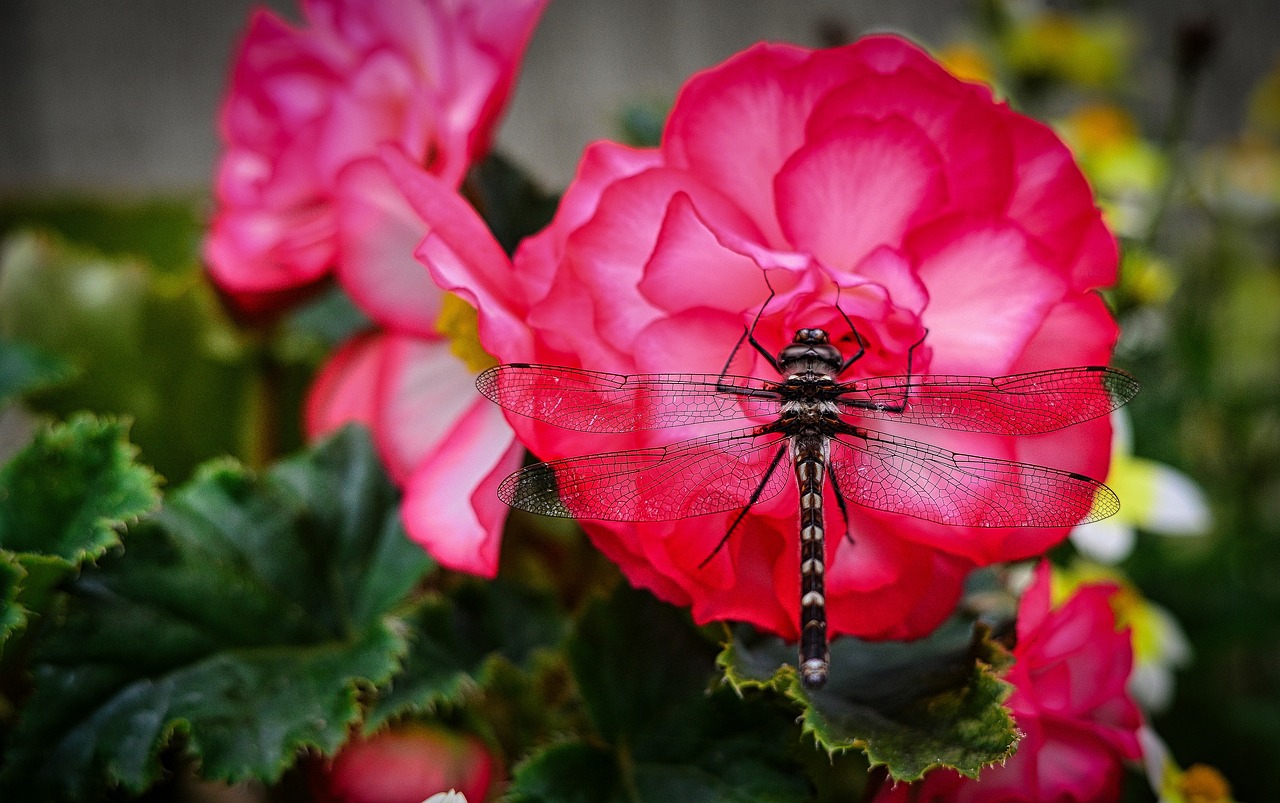
Conservation Strategies
Addressing the pressing issue of biodiversity loss requires a multifaceted approach that combines various . These strategies are essential not only for preserving the myriad of species on our planet but also for maintaining the ecological balance that supports human life. One of the most effective methods is through habitat restoration, which involves revitalizing ecosystems that have been degraded or destroyed. By restoring habitats, we can provide a safe haven for numerous species, allowing them to thrive once again.
Another crucial component of conservation is the establishment of protected areas. These regions are designated to safeguard biodiversity and provide refuge for endangered species. They serve as sanctuaries where ecosystems can function without the pressures of human interference. However, simply creating these areas is not enough; they must be effectively managed to ensure their long-term success. This includes monitoring wildlife populations, enforcing anti-poaching laws, and engaging local communities in conservation efforts.
Moreover, the implementation of sustainable practices is vital in mitigating the impacts of climate change. This encompasses a wide range of actions, from sustainable agriculture and forestry to responsible tourism. By promoting practices that minimize environmental harm, we can reduce the pressure on ecosystems and allow biodiversity to flourish. For example, sustainable agricultural methods can enhance soil health and reduce the need for chemical fertilizers, which often lead to habitat degradation.
In addition to these strategies, community involvement plays a pivotal role in conservation efforts. Engaging local populations not only fosters a sense of ownership but also ensures that conservation initiatives are culturally relevant and effective. Education and awareness campaigns can empower communities to take action, leading to grassroots movements that drive significant change. When people understand the importance of biodiversity and its direct impact on their lives, they are more likely to participate in conservation activities.
To illustrate the effectiveness of these conservation strategies, consider the following table that highlights successful case studies:
| Conservation Strategy | Case Study | Impact |
|---|---|---|
| Habitat Restoration | Everglades Restoration Project, USA | Improved water quality and increased wildlife populations, including endangered species like the Florida panther. |
| Protected Areas | Yellowstone National Park, USA | Preservation of diverse species and ecosystems, serving as a model for protected area management worldwide. |
| Sustainable Practices | Agroforestry in Costa Rica | Enhanced biodiversity and improved livelihoods for local farmers by integrating trees with crops. |
In summary, the fight against biodiversity loss is a shared responsibility that requires collaboration among governments, organizations, and individuals. By implementing effective conservation strategies, we can not only protect our planet's rich biodiversity but also ensure a sustainable future for generations to come.
As we delve into the topic of conservation strategies, you might have some questions. Here are a few frequently asked questions that can provide further clarity:
- What are the most effective conservation strategies? The most effective strategies include habitat restoration, the establishment of protected areas, and the promotion of sustainable practices.
- How can communities get involved in conservation efforts? Communities can participate through local conservation organizations, volunteer programs, and by adopting sustainable practices in their daily lives.
- What role does government policy play in conservation? Government policies are crucial for creating frameworks that support conservation initiatives, including funding, legal protections, and regulations to mitigate environmental harm.
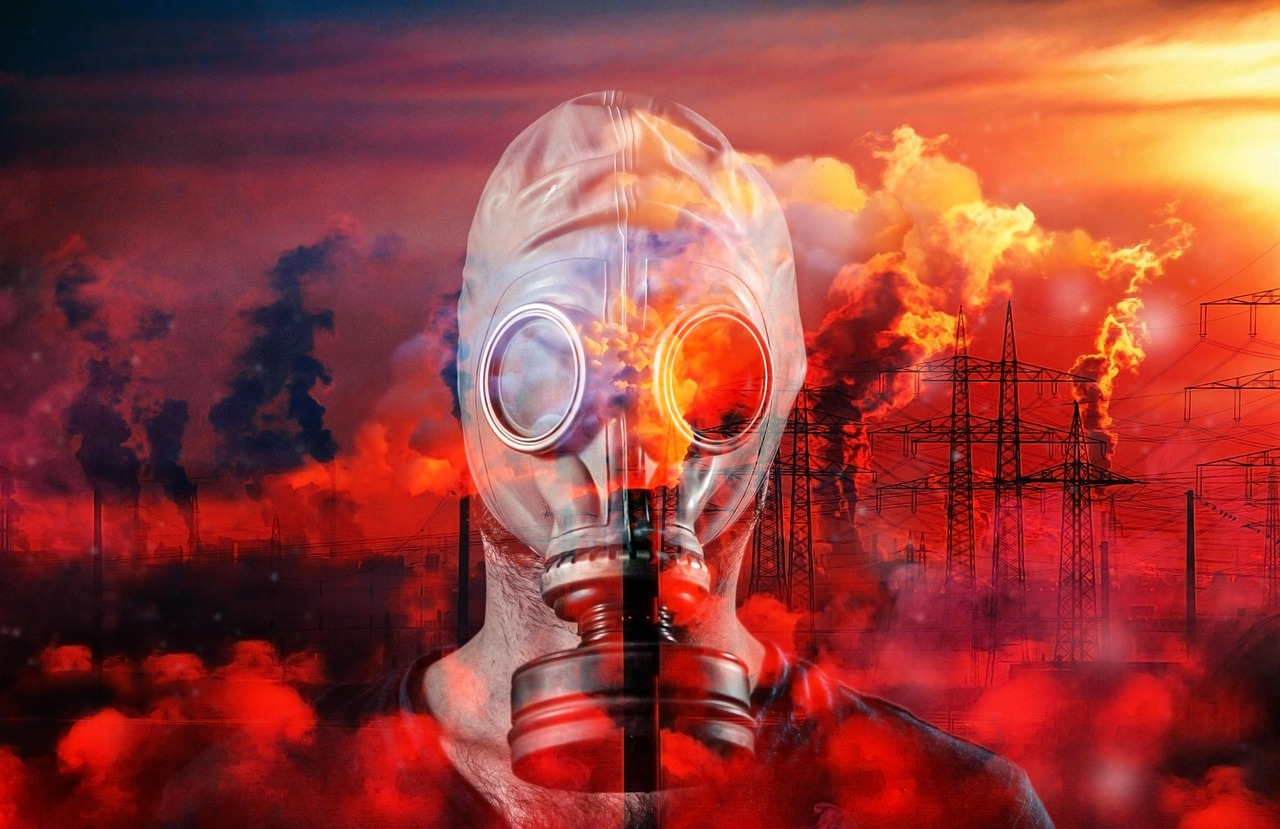
Restoration Efforts
Restoration efforts are vital in the fight against biodiversity loss, acting as a lifeline for ecosystems struggling under the pressures of climate change. These initiatives aim to revive degraded habitats, enhance ecosystem functions, and ultimately support the myriad species that rely on these environments for survival. Imagine a barren landscape, stripped of its vibrant flora and fauna, slowly transformed back into a thriving ecosystem—this is the power of restoration.
One of the most compelling aspects of restoration is the variety of methods employed. From reforestation projects that plant native trees to wetland restoration that revitalizes aquatic ecosystems, these efforts can take many forms. For instance, successful restoration projects often follow a series of well-defined steps:
- Assessment: Understanding the current state of the ecosystem is crucial. This involves evaluating the extent of degradation and identifying the native species that once thrived.
- Planning: Developing a detailed plan that outlines the restoration goals, necessary resources, and timelines ensures a structured approach.
- Implementation: This is where the action happens—planting trees, removing invasive species, and restoring natural water flows.
- Monitoring: Continuous observation of the restored area helps to measure success and make adjustments as needed.
One remarkable example of restoration success is the Great Green Wall initiative in Africa. This ambitious project aims to combat desertification by creating a mosaic of green and productive landscapes across the Sahel region. By planting trees and restoring degraded land, it not only fights climate change but also improves food security and livelihoods for local communities. The results are nothing short of inspiring, showcasing how collective efforts can lead to significant environmental recovery.
Moreover, restoration efforts often involve local communities, making them a cornerstone of sustainable practices. Engaging communities not only fosters a sense of ownership but also ensures that the restoration aligns with local needs and knowledge. For example, in coastal areas, community-led mangrove restoration projects have proven effective in enhancing coastal resilience against storms while providing critical habitats for marine life. This synergy between human and ecological systems is essential for long-term success.
In addition to on-the-ground efforts, policy support plays a crucial role in facilitating restoration initiatives. Governments and organizations must prioritize biodiversity restoration in their environmental strategies. For instance, funding for restoration projects can be allocated through various channels, including international grants, local government budgets, and non-profit organizations. The table below illustrates some key funding sources for restoration projects:
| Funding Source | Description |
|---|---|
| International Grants | Funding provided by global organizations aimed at environmental restoration and sustainability. |
| Government Programs | National or local initiatives that allocate resources for ecological restoration. |
| Non-Profit Organizations | Private entities that support conservation and restoration projects through donations and grants. |
In conclusion, restoration efforts are not just about planting trees or cleaning up rivers; they represent a holistic approach to healing our planet. By addressing the root causes of biodiversity loss and actively restoring degraded ecosystems, we can create a more resilient environment for both wildlife and humans. The road to recovery may be long, but with collective action, innovative practices, and unwavering commitment, we can turn the tide on biodiversity loss and nurture the Earth back to health.
Q1: What are the main goals of restoration efforts?
A1: The primary goals include reviving degraded ecosystems, enhancing biodiversity, and improving ecosystem services like clean water and air.
Q2: How can individuals contribute to restoration efforts?
A2: Individuals can participate in local restoration projects, volunteer with environmental organizations, or even start their own initiatives by planting native species in their communities.
Q3: Are restoration efforts effective?
A3: Yes, many restoration projects have shown significant success in reviving ecosystems and supporting biodiversity when implemented correctly and monitored over time.
Q4: What role does community involvement play in restoration?
A4: Community involvement is crucial as it ensures that restoration efforts are culturally relevant, sustainable, and supported by those who live in the area.
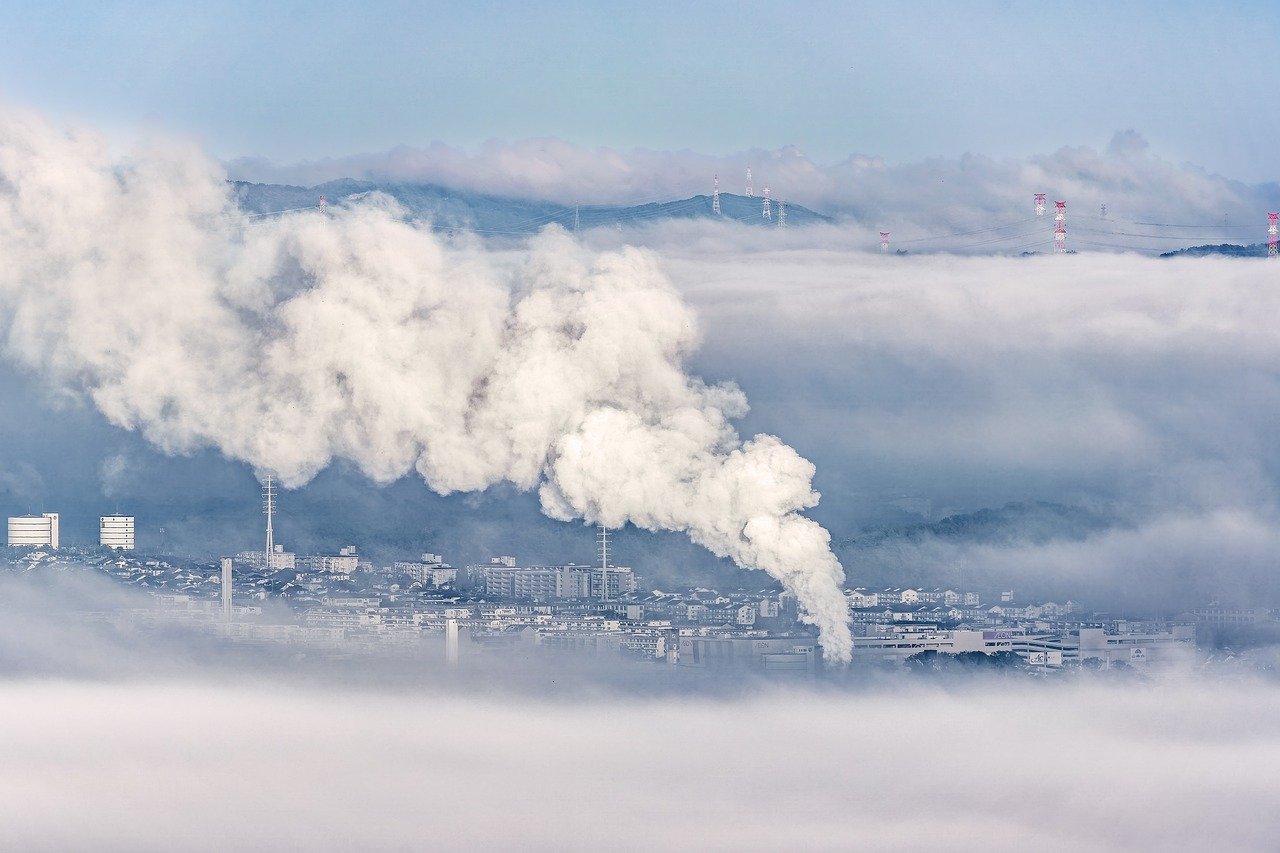
Policy and Advocacy
Addressing the urgent issue of biodiversity loss requires a concerted effort from policymakers, communities, and individuals alike. Effective policies and robust advocacy are essential components in the fight against the detrimental effects of climate change on our planet's biodiversity. Without a structured approach to governance and community engagement, we risk losing not just species but entire ecosystems that play crucial roles in maintaining ecological balance.
One of the first steps in this journey is the development of comprehensive environmental legislation. Governments around the world must prioritize laws that protect endangered species, conserve critical habitats, and regulate activities that contribute to climate change. For instance, policies that limit greenhouse gas emissions from industries and promote renewable energy sources can significantly mitigate climate impacts. Additionally, funding for conservation projects needs to be increased, ensuring that resources are allocated effectively to areas that require immediate attention.
Advocacy plays a pivotal role in shaping public opinion and influencing policymakers. Grassroots movements, led by passionate individuals and organizations, can drive significant change. These groups often mobilize communities to participate in conservation efforts, raise awareness about the importance of biodiversity, and lobby for stronger environmental protections. Social media campaigns can amplify their messages, reaching a wider audience and fostering a collective sense of responsibility toward our planet.
Moreover, international cooperation is vital in addressing biodiversity loss. Treaties and agreements, such as the Convention on Biological Diversity, provide frameworks for countries to work together towards common goals. These agreements can facilitate knowledge sharing, funding for conservation projects, and the establishment of protected areas. A collaborative approach ensures that efforts are not isolated but instead contribute to a global strategy for sustaining biodiversity.
In addition to formal policies, community-driven initiatives can have a substantial impact. Local conservation groups often engage in habitat restoration projects, educational programs, and sustainable practices that benefit both the environment and local economies. For example, community-led reforestation projects not only help restore habitats but also provide jobs and enhance local livelihoods. Such initiatives demonstrate that conservation can be a win-win situation, benefiting both nature and people.
To further illustrate the importance of policy and advocacy in biodiversity conservation, consider the following table that outlines key strategies and their impacts:
| Strategy | Description | Impact |
|---|---|---|
| Legislation | Creation of laws to protect endangered species and habitats | Reduces illegal hunting and habitat destruction |
| Community Engagement | Involving local communities in conservation efforts | Fosters stewardship and sustainable practices |
| International Agreements | Global treaties to coordinate conservation efforts | Enhances collaboration and resource sharing |
| Awareness Campaigns | Raising public awareness about biodiversity issues | Increases public support for conservation initiatives |
Ultimately, the combination of sound policy, effective advocacy, and community involvement creates a powerful force for change. By working together, we can ensure that our planet's biodiversity is preserved for future generations. It is not just about saving species; it is about safeguarding our own future, as the health of our ecosystems directly impacts our well-being.
- What is biodiversity? Biodiversity refers to the variety of life on Earth, including the diversity of species, ecosystems, and genetic variations.
- How does climate change affect biodiversity? Climate change alters habitats, disrupts migration patterns, and can lead to the extinction of vulnerable species.
- What role do policies play in biodiversity conservation? Policies establish legal frameworks to protect species and habitats, regulate harmful activities, and allocate resources for conservation efforts.
- How can individuals contribute to biodiversity conservation? Individuals can engage in local conservation efforts, support sustainable practices, and advocate for stronger environmental protections.
Frequently Asked Questions
- What is biodiversity and why is it important?
Biodiversity refers to the variety of life on Earth, including different species, genetic variations, and ecosystems. It's crucial because it supports ecological balance, provides resources like food and medicine, and contributes to the overall health of our planet. Imagine a giant puzzle; every piece is essential for the complete picture, and losing even one can disrupt the whole system.
- How does climate change affect biodiversity?
Climate change disrupts ecosystems by altering habitats, shifting weather patterns, and increasing the frequency of extreme events. This can lead to species migration, changes in reproductive cycles, and even extinction. Think of it like a game of musical chairs; when the music stops, some species simply won't find a seat and may perish.
- What are the main sources of greenhouse gas emissions?
The primary sources of greenhouse gas emissions include industrial activities, transportation, and agriculture. Each of these contributes significantly to the overall emissions that drive climate change. Picture a factory belching smoke, cars lining the roads, and farms releasing methane; together, they create a potent mix that warms our planet.
- What role does deforestation play in biodiversity loss?
Deforestation leads to habitat loss, which is a major threat to countless species. When forests are cut down, animals lose their homes and food sources, making it difficult for them to survive. It's like tearing down a neighborhood; the residents have nowhere to go, and their community crumbles.
- Which species are most at risk of extinction due to climate change?
Species that are particularly vulnerable include polar bears, coral reefs, and various amphibians. These species often have limited ranges or specific habitat requirements, making them more susceptible to changes in climate. Imagine a delicate flower that only grows in a specific spot; if that spot changes, the flower may not survive.
- Can species adapt to climate change?
Some species can adapt to changing conditions through behavioral changes, migration, or even evolutionary shifts. However, not all species have the capacity to adapt quickly enough to keep pace with the rapid changes brought about by climate change. It's like trying to learn a new skill overnight; some may excel, while others struggle to keep up.
- What are effective conservation strategies to combat biodiversity loss?
Effective conservation strategies include habitat restoration, establishing protected areas, and promoting sustainable practices. These approaches aim to mitigate the impacts of climate change and help ecosystems recover. Think of it as giving nature a helping hand to heal and thrive once more.
- How can policy and advocacy help in biodiversity conservation?
Policy and advocacy play a vital role by creating frameworks for conservation, funding initiatives, and raising public awareness. Strong legislation can protect vulnerable species and habitats, while community efforts can drive grassroots change. It's like building a team; when everyone works together, they can achieve remarkable results.



















